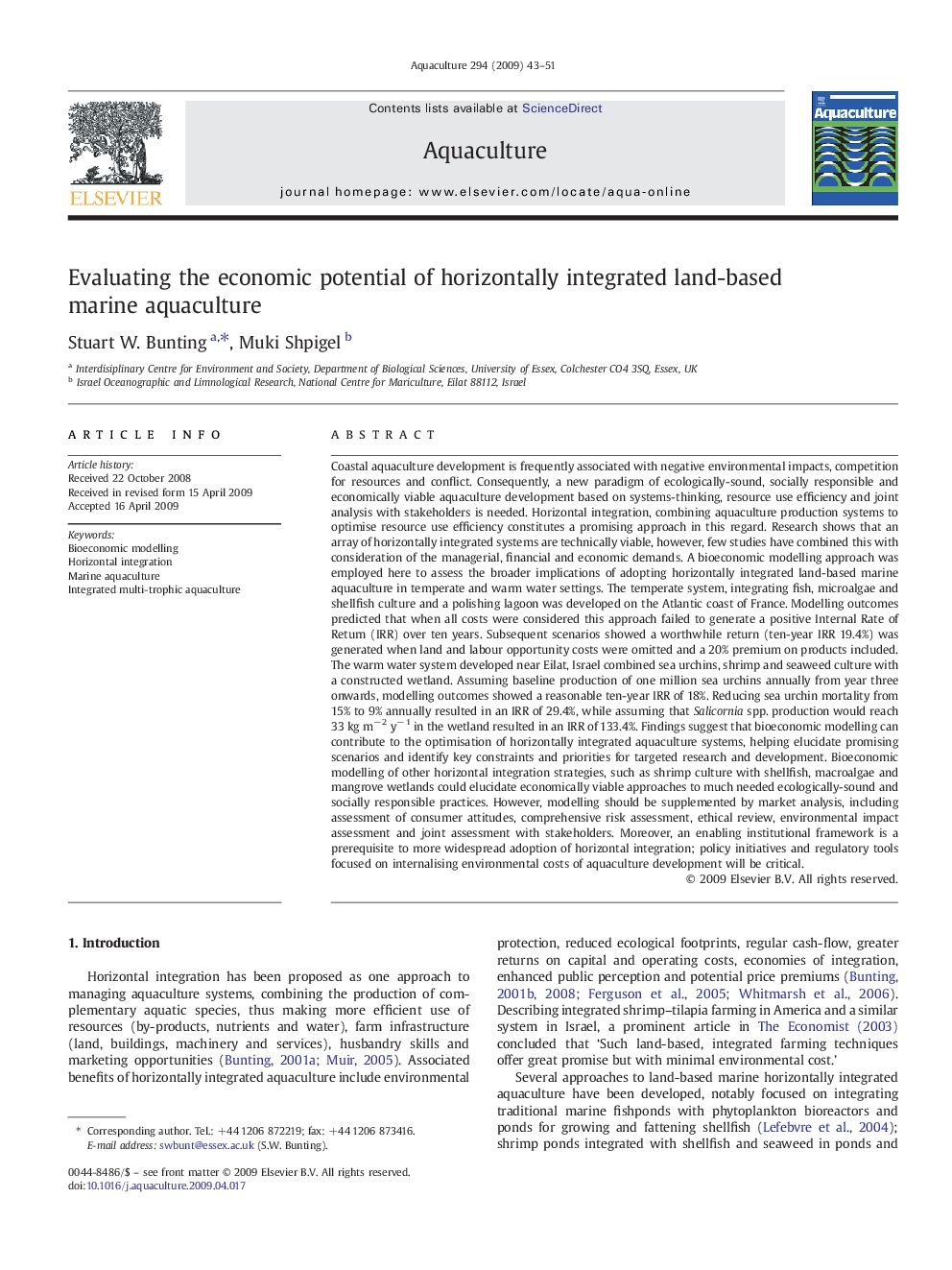| کد مقاله | کد نشریه | سال انتشار | مقاله انگلیسی | نسخه تمام متن |
|---|---|---|---|---|
| 8496100 | 1552939 | 2009 | 9 صفحه PDF | دانلود رایگان |
عنوان انگلیسی مقاله ISI
Evaluating the economic potential of horizontally integrated land-based marine aquaculture
دانلود مقاله + سفارش ترجمه
دانلود مقاله ISI انگلیسی
رایگان برای ایرانیان
کلمات کلیدی
موضوعات مرتبط
علوم زیستی و بیوفناوری
علوم کشاورزی و بیولوژیک
علوم آبزیان
پیش نمایش صفحه اول مقاله

چکیده انگلیسی
Coastal aquaculture development is frequently associated with negative environmental impacts, competition for resources and conflict. Consequently, a new paradigm of ecologically-sound, socially responsible and economically viable aquaculture development based on systems-thinking, resource use efficiency and joint analysis with stakeholders is needed. Horizontal integration, combining aquaculture production systems to optimise resource use efficiency constitutes a promising approach in this regard. Research shows that an array of horizontally integrated systems are technically viable, however, few studies have combined this with consideration of the managerial, financial and economic demands. A bioeconomic modelling approach was employed here to assess the broader implications of adopting horizontally integrated land-based marine aquaculture in temperate and warm water settings. The temperate system, integrating fish, microalgae and shellfish culture and a polishing lagoon was developed on the Atlantic coast of France. Modelling outcomes predicted that when all costs were considered this approach failed to generate a positive Internal Rate of Return (IRR) over ten years. Subsequent scenarios showed a worthwhile return (ten-year IRR 19.4%) was generated when land and labour opportunity costs were omitted and a 20% premium on products included. The warm water system developed near Eilat, Israel combined sea urchins, shrimp and seaweed culture with a constructed wetland. Assuming baseline production of one million sea urchins annually from year three onwards, modelling outcomes showed a reasonable ten-year IRR of 18%. Reducing sea urchin mortality from 15% to 9% annually resulted in an IRR of 29.4%, while assuming that Salicornia spp. production would reach 33 kg mâ 2 yâ 1 in the wetland resulted in an IRR of 133.4%. Findings suggest that bioeconomic modelling can contribute to the optimisation of horizontally integrated aquaculture systems, helping elucidate promising scenarios and identify key constraints and priorities for targeted research and development. Bioeconomic modelling of other horizontal integration strategies, such as shrimp culture with shellfish, macroalgae and mangrove wetlands could elucidate economically viable approaches to much needed ecologically-sound and socially responsible practices. However, modelling should be supplemented by market analysis, including assessment of consumer attitudes, comprehensive risk assessment, ethical review, environmental impact assessment and joint assessment with stakeholders. Moreover, an enabling institutional framework is a prerequisite to more widespread adoption of horizontal integration; policy initiatives and regulatory tools focused on internalising environmental costs of aquaculture development will be critical.
ناشر
Database: Elsevier - ScienceDirect (ساینس دایرکت)
Journal: Aquaculture - Volume 294, Issues 1â2, 1 September 2009, Pages 43-51
Journal: Aquaculture - Volume 294, Issues 1â2, 1 September 2009, Pages 43-51
نویسندگان
Stuart W. Bunting, Muki Shpigel,